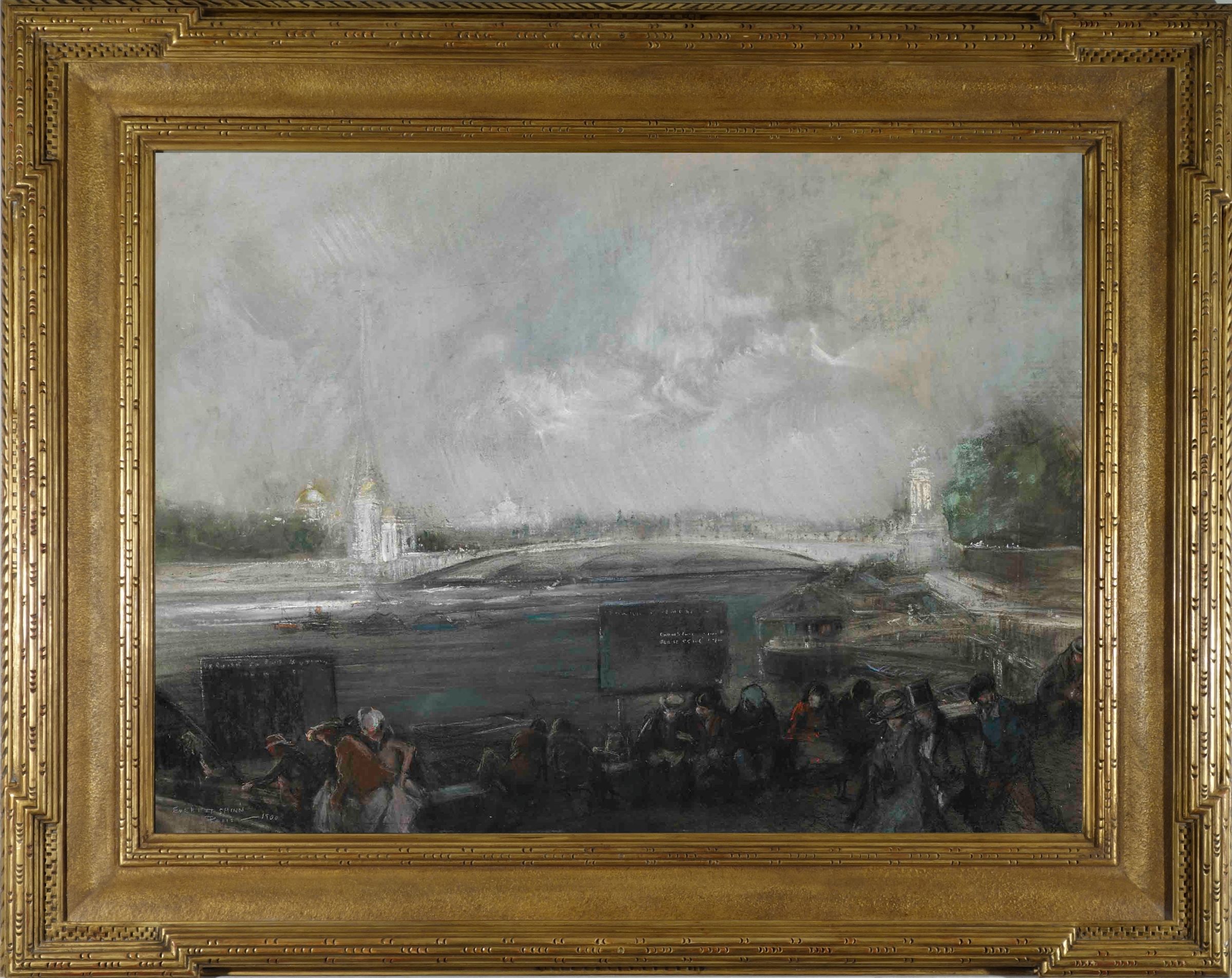Recognized as one of the most versatile and popular members of the New York Ash Can School, Everett Shinn was a keen observer of contemporary urban life. His street scenes captured the bustle of metropolitan life at the turn of the century, offering viewers relatable scenes of modern culture. The multi-talented Shinn also achieved success as a muralist, decorator, set design and playwright.
When he was fourteen he moved to Philadelphia where he enrolled in a technical school to study mechanical drawing. By 1893 he decided to pursue an artistic career through study at the Pennsylvania Academy of Fine Arts. A skilled draftsman with the ability to record an image quickly and efficiently, he also worked as an artist-reporter at the Philadelphia Press. During this period, Shinn became friendly with several artists and illustrators including Robert Henri, William Glackens, George Luks and John Sloan.
Captivated by the energy of New York City, Shinn’s creative focus shifted to depicting scenes of metropolitan life in areas of the city that were recognizable and more refined such as Union Square Park, Madison Square Park, Washington Square Park, Gramercy Park and Central Park. Unlike his American Impressionist contemporaries, Shinn concentrated on the people of New York, often painting scenes at street-level and capturing the bustle of urban life. Shinn quickly experienced success as an artist as viewers were able to identify with his choice of subjects.
Shinn’s pastels particularly stand out within his oeuvre. He mastered the medium and made it his own with the immediacy of his stroke, contrasting with the delicate handling of the medium by his contemporaries.
In 1897, Shinn moved to New York City, where he was employed as an illustrator for the New York World and then as art editor at Ainslee’s Magazine. Shinn began exhibiting his drawings and pastels at the Pennsylvania Academy of the Fine Arts by 1900, and that same year Shinn had his first solo exhibition at Boussod, Valadon & Co., where he sold thirty of the forty-four pastels that he exhibited. Shortly after, Shinn and his wife took their first trip to Europe, traveling to London and Paris, while there – experiencing the major Exposition Universelle.
In February of 1908, Shinn participated in the one and only exhibition of The Eight, held at the Macbeth Gallery in New York. In addition to Shinn, the group included his former colleagues from The Philadelphia Press, Henri, Glackens, Luks, and Sloan as well as Ernest Lawson, Maurice Prendergast and Arthur B. Davies. A landmark event in the annals of American art, the exhibition was dominated by the urban imagery of Shinn, Henri, Glackens, Luks and Sloan, who would later be dubbed the “Ashcan School.” Their gutsy realism and interest in depicting the slums, alleyways and bleaker sections of Manhattan provided a stark contrast to the more genteel images which dominated the exhibitions at the National Academy of Design in New York. Beyond the tenement life, Shin also painted scenes of vaudeville and docks.






